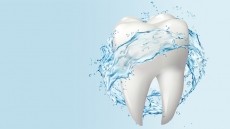What’s driving the oral care category now?

According to a report from Statista, the global oral care market is estimated to be worth €47.28bn and it has an expected Compound Annual Growth Rate (CAGR) rise of 3.12%% between 2023 and 2028.
It appears that more people have made a link between wellbeing and oral health and as a result, there has been increased innovation in this market, with more launches that venture outside of traditional oral care boundaries.
“Consumer knowledge about the correlation of personal hygiene, health and wellbeing is higher than ever before,” said Vice President Consumer Goods, Group Sales & Marketing at Omya, Stefan Lander.
“Therefore, for the past few years, sales of oral care products have continued to rise, with consumers viewing their purchases as lifestyle statements and an important part of a daily self-care rituals.”
Lander said an oral care product tends to be successful when it’s functional, proven, targeted and, ideally, natural.
He also highlighted the increased desire from customers for more flexibility, for example, tooth tabs and powders, which can be used without water and on-the-go. “And this is beneficial not only from a convenience point of view, but also because such products can contain various active ingredients that are generally difficult to successfully combine in an aqueous environment,” he said.
The current challenges for oral care manufacturers
Industrial minerals producer, Omya – which creates minerals for the oral care industry – ran a symposium called The Healthy Bite in September, which gathered oral care experts and stakeholders from across the globe as a platform for discussion around breakthroughs in oral care.
Lander said that its has become increasingly challenging for oral care manufacturers to find formulations and application forms that tick several boxes simultaneously, including being natural, effective, beneficial for health and on-trend.
“This approach can only be realised with multifunctional premium ingredients and processing expertise,” he said. “Plus, cost efficiency will always be key.”
Once oral care products were simply designed to keep teeth and gums clean and health and breath smelling fresh, but category innovation in recent years has taken it beyond these ‘basics’.
Here are some of the main factors driving the category as we veer into 2024...
Driver 1: Sustainability
As with every other personal care and beauty category, oral care is striving towards a more eco-friendly and potentially circular approach.
Colgate-Palmolive led the way by designing an eco-friendly toothpaste tube, but going into 2024, being sustainable doesn't just stop at packaging. There is a need for these considerations throughout every element of the supply chain.
“Our product development focuses on high-quality natural raw materials with a low carbon footprint and minimum waste,” said Lander.
“Thanks to special treatment methods, we can create mineral particles that are easy to process, thus making various application forms feasible. And perhaps most importantly, the characteristics of our functional mineral particles make them highly versatile for products with numerous benefits – for example, desensitisation of sensitive teeth, new application forms such as tabs, or carriers for flavours and actives are all possible.”
Driver 2: Microbiome-considerate formulations
As numerous studies show that the oral microbiome impacts our systematic health, there is starting to be more emphasis on the microbiome in the oral care category.
The oral microbiome describes the 700+ microorganisms found on the tongue, teeth, gingiva, palates, and tonsils. The diverse community of fungi, archaea, protozoa and bacteria are imperative for health and directly connects with the sinuses, larynx, trachea and lungs.
Poor oral microbiome condition is not only associated with oral diseases like tooth decay and it has also been linked to the development of serious conditions like rheumatoid arthritis and inflammatory bowel disease, to name just two.
According to CEO of microbiome certification company MyMicrobiome Dr Kristin Neumann, recent studies also hint at a connection between the oral microbiome and plaque with cardiovascular diseases and Alzheimer's disease.
“The oral microbiome is dominated by a bacterial species called Streptococcus,” explained Dr Neumann. “Bacteria colonise in the oral mucosa, on the teeth, and on the tongue. The mouth is the entrance to the most densely populated microbiome in the human body, the gastrointestinal tract.”
In terms of current trends, she said she is currently seeing more probiotic oral care products like toothpaste, mouthwashes and chewing gum being tested.
Mouthwashes in particular are being formulated in a milder, less antibacterial way. “We just certified the first microbiome-friendly ingredient for the mouth which is based on Aloe Vera,” she shared.
Lander agreed. “Probiotics are beginning to make their presence felt in the market, as consumers better understand the important role they play in a healthy microbiome,” he said. “Beneficial oral bacteria can also contribute to overall mouth health.”
Meanwhile, CEO at microbiome testing company Sequential Oliver Worsley also noted that more clients are now asking his company for in vivo testing for personal care products.
“It's important that we test properly when we assess 'microbiome friendliness', otherwise we could be seen to be misleading the consumer,” he stressed. “Using in vitro methods has limited utility, as nothing can be used for claims with this type of testing.”
There is also a crossover with other industries for the microbiome sector. For example, dietary supplement and functional food company Designs for Health, Inc. has just launched PerioBiotic Silver. This fluoride-free probiotic toothpaste promises to be a disruptor in the oral health care space. The product, which supports a balanced oral microbiome, contains a unique ingredient formulation, including purified silver, CoQ10, and grape seed extract to support overall dental and oral health and wellness.
Driver 3: Sensory experiences
According to NPD & Innovation Consultant and Trainer, Nathaniel Davis, all beauty and personal care categories are having to work harder to stand out in an increasingly saturated market and one why they can do this is with sensory product attributes.
“The competitive landscape in every category of beauty products is complex, evolving, and challenging, and as such, the more challenging it becomes, the more important sensorial marketing, sensory enhanced products, experiences and packaging becomes,” he explained.
According to Davis, Generation Z is the key demographic to target for sensory beauty and personal care products, as they are more aware and the most engaged with online beauty content of any generation before. “They are more primed for experimentation than our prior generations. They are more active at growing the repertoire of products they use; being glad to add more products to their routines,” he said.
Lander agreed that more people are appreciating enhanced and unexpected sensory effects, along with innovative ingredients, in their oral care products.
“Granules, for example, not only add visual appeal but also impart tongue-tingling freshness,” he said.
“Gel structures, meanwhile, can optimise cooling effects, especially when combined with certain flavours and botanicals. The category will, however, remain dominated by mint as it not only freshens breath - one of the top claims of the category - but also helps mask off-tastes caused by active ingredients such as chlorhexidine (anti-plaque) and potassium nitrate (anti-sensitivity).”
He also highlighted that fortification with vitamins and minerals also remains a good claim.
Driver 4: Naturalness
Naturalness is another category driver, according to Lander. “Natural minerals such as calcium carbonate and hydroxyapatite, or functionalised calcium carbonate, have proven remineralisation and whitening properties, and are also a highly effective, natural solution to sensitivity,” he said.
In toothpaste designed specifically for sensitive teeth, these neutral-tasting minerals are a perfect replacement for potassium nitrate, giving formulators much more flexibility in terms of flavour combinations.
He shared that plant oils, such as coconut oil, are also an ideal inclusion thanks to their moisturising properties, and ability to reduce the oral microbial load that causes plaque.
Black charcoal, meanwhile, is popular too, he said, particularly in whitening products, where it promises both enhanced cleaning performance and dramatic visual appeal. “A good way to convey the benefits of a particular formulation is to colour-match it with its key ingredients,” he advised.
















